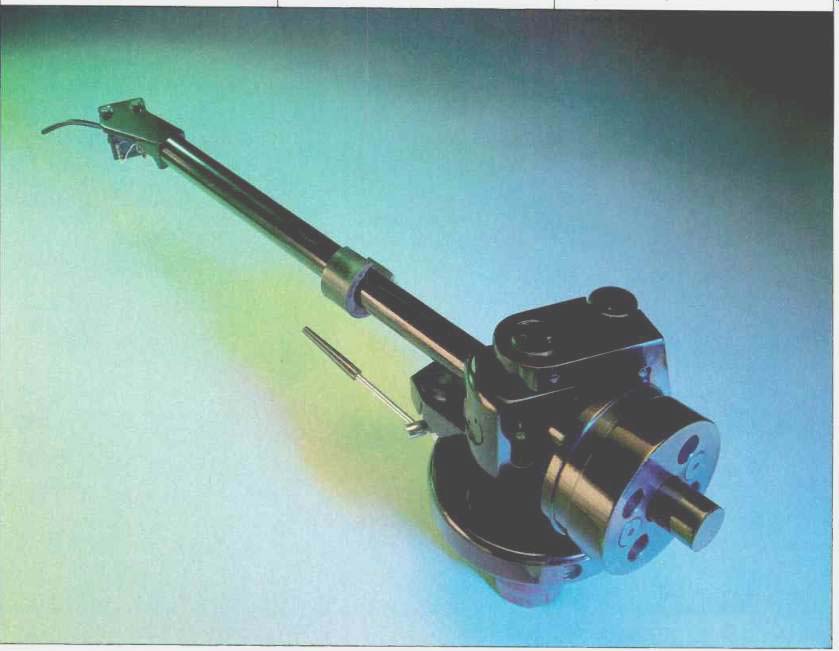
Manufacturer's Specifications:
Tonearm Type: Large-diameter, thin-wall, pivoted tube with fixed headshell and adjustable counterweight mass.
Pivot-to-Stylus Distance: 9 in. (22.9 cm).
Overall Length: 11 1/2 in. (29.2 cm).
Offset Angle: 23.75°.
Effective Mass: 16.0 grams, without cartridge.
Cartridge Weight Range: 4 to 12 grams.
Total Cable Capacitance: 90 pF.
Price: $875.
Cartridge Type: Moving coil.
Stylus: Oval diamond on beryllium-pipe cantilever.
Output: 0.25 mV for 3.54 cm/S at 1 kHz.
Frequency Response: 20 Hz to 35 kHz.
Channel Separation: 28 dB at 1 kHz.
Channel Balance: 1 dB.
Impedance: 14 ohms.
Compliance: Static, 38 x 10^-6 cm/ dyne; dynamic, 17 x 10^-6 cm/dyne at 100 Hz.
Recommended Tracking Force: 1 3 grams, ±0.1 gram.
Weight: 5.6 grams.
Price: $490; replacement stylus, $245.
Company Address: c/o Reference Monitor International, 2615 Jacaranda, Carlsbad, Cal. 92008.
One of the reasons that analog disc is still the medium of choice among audiophiles is that, a few years ago, tone-arms took a turn for the better, as designers began to apply what some might term "space-age" technology. One of the tonearms that has resulted from this new technology is the Zeta, manufactured in Willesden, England by C & B Tools & Developments and distributed in the U.S. by Reference Monitor International of Carlsbad, Cal. Other tonearms which use similar engineering principles and materials include the Sumiko MDC-800 and the Linn Ittok LV I. Some of the ideas incorporated in the SME Series V can also be traced to this new approach to tonearm design. The Sumiko, Linn, and SME tonearms have been tested previously; re ports can be found in the September 1983, March 1984, and June 1986 issues of Audio.
Like the other tonearms mentioned above, the Zeta features a relatively large-diameter, thin-walled, straight tube.
Armtubes used in older designs were usually smaller in diameter, with thicker walls, and often were angled near the headshell or had S-shaped bends along their length. The use of thinner walls of larger diameter allows the mass of the tonearm to be reduced while equaling or even surpassing the strength and integrity of the older designs.
===============
MEASURED DATA
Zeta Standard Tonearm:
Pivot-to-Stylus Distance: 016 in. (233 mm).
Pivot-to-Rear-of-Arm Distance: 2 5/6 in. (59 mm).
Overall Height Adjustment: 5/8 in. (16 mm)
Tracking-Force Adjustment: 0 to 1.8 grams; no calibrations.
Tracking-Force Calibration: None; auxiliary gauge required.
Cartridge Weight Range: 5 to 12 grams.
Counterweights: One, with steel inserts.
Counterweight Mounting: Steel discs screwed to aluminum carrier.
Sidethrust Correction: Coil-spring type, uncalibrated knob.
Pivot Damping: None.
Lifting Device: Damped lever and finger lift.
Headshell Offset: 23.8°.
Overhang Adjustment: Slots in headshell.
Bearing Alignment: Excellent.
Bearing Friction: Less than 40 mg, no play.
Bearing Type: Ball-and-race, vertical and lateral.
Lead Torque: Very low.
Arm-Lead Capacity: 88 pF.
Arm-Lead Resistance: 1.2 ohms.
External Lead Length: 42 in., with gold phono plugs.
Structural Resonances: 350, 900, and 1,650 Hz.
Base Mounting: Round hole, six screws.
Goldbug Clement II Cartridge:
Coil Inductance: 15 uH (left and right channels).
Coil Resistance: Left, 14.0 ohms; right, 13.6 ohms.
Output Voltage: Left, 0 096 mV/cm/S; right, 0.093 mV/cm/S.
Recommended Tracking Force: 1.6 grams.
Cartridge Mass: 5 7 grams.
Microphony: Very low.
Hum Rejection: Excellent.
High-Frequency Resonance: 27.8 kHz.
Rise-Time: 20 uS Low-Frequency Resonance: 6 Hz (in Zeta Standard tonearm).
Low-Frequency Q 1
Recommended Lead Resistance: 40 ohms.
====================
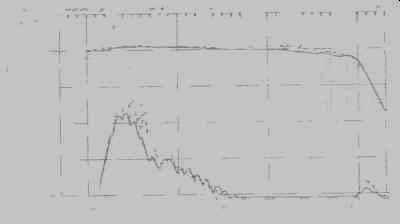
Fig. 1--Frequency response and interchannel crosstalk of Zeta Standard arm
and Goldbug Clement II cartridge, using B & K 2010 test record.
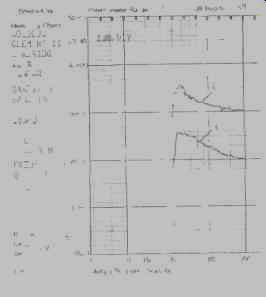
Fig. 2--Low-frequency tonearm/cartridge resonance is at 5.9 Hz with a G1 of
3.1, B & K 2010.
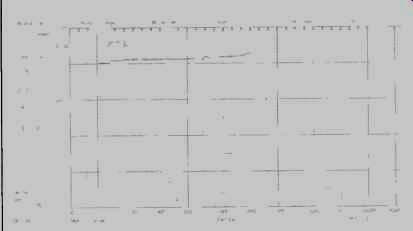
Fig. 3--Slow-sweep check (20 Hz to 2 kHz) for tonearm resonances. Note small
discontinuities at 28, 42, and 320 Hz.
Another, less obvious design idea used in the Zeta was to make the armtube continuous from the headshell to the rear of the tonearm. This is a result of rethinking the design parameters in terms of energy transfer and dissipation. By using the same material for the headshell and the armtube, the velocity of energy is unchanged from one end of the tonearm to the other. The rationale behind this stems from the fact that whenever kinetic energy meets a barrier, standing-wave energy is generated. This causes interference effects in the mechanical energy that is traveling along the tonearm and makes damping and dissipating this energy more difficult. Any energy which is not properly dissipated can cause delayed-energy interactions with the desired mechanical energy being transduced by the pickup cartridge stylus, because it can be reflected back to the stylus tip. A change in material, and therefore a change in propagation velocity, acts as an unwanted barrier, to a greater or lesser extent, depending upon how different the materials are. The fact that the Zeta headshell is bonded to the armtube not by adhesives but by a tight, thermal bonding technique is good because it ensures a minimal barrier effect between the two.
In other words, the unwanted mechanical energy in the tonearm can be transferred along the armtube to the pivot bearings and then through the arm pillar to the mounting board, where it can be dissipated. While (for practical reasons) the bearings cannot be of the same material as the armtube and headshell, the arm pillar is. Therefore, any energy which is reflected will encounter a similar energy velocity characteristic on either side of the bearings, and thus ensure at least a symmetrical relationship.

Fig. 4--Output of arm/ cartridge when mechanical impulse was applied to armtube,
with arm on rest. Decay rate is a bit slower than desirable.
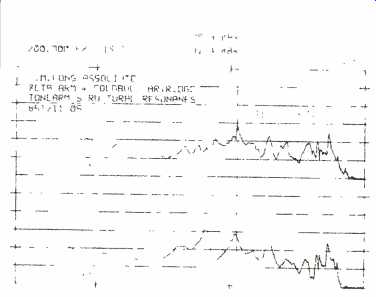
Fig. 5--Output (averaged) of arm/cartridge due to 16 mechanical impulses applied
to armtube. Note peaks between 1 and 10 kHz.
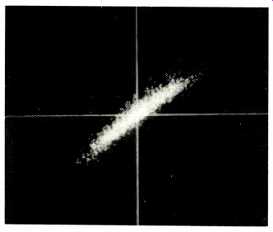
Fig. 6--Interchannel phase difference of arm/cartridge, using pink noise from
B & K 2011, band 7.

Fig.
7--Interchannel phase difference of arm/ cartridge as a function of frequency
(B & K 2011, band 7, pink noise). Phase difference at 20 kHz (cursor position)
is 3.9°, equivalent to only 0.5 uS of interchannel delay.

Fig. 8--Tracking of arm/ cartridge with a 1-kHz test tone from the B & K
2010 at 20 cm/S (top) and 25 cm/S (bottom).
First Impressions
I tested the bearing friction in my usual manner by holding the tonearm pillar in one hand and pulling and pushing the armtube with the other hand. The Zeta tonearm bearings, which are ball-and-race for both vertical and horizontal pivots, had no noticeable play and yet were very free of friction in either plane of motion.
The Zeta comes in a sturdy wooden case with a hinged cover. The satin-black finish of the headshell, armtube, gimbal support, pillar, and mounting base is excellent. The arm pillar and the gimbal bearing support give an outward impression of really solid construction, and indeed they have been machined from solid blocks of aluminum and finished to a satin smoothness. All of this tells me that the manufacturer is committed to producing a very high-quality product, albeit in necessarily small quantities.
Features
The Zeta's solid headshell has two slots which allow for minor final adjustments in the overhang and offset to bring forth that last bit of performance. The finger lift is well designed and easy to grip.
The counterweight consists of an aluminum shell which holds different steel inserts that can be chosen to balance he cartridge so that the counterweight is as close to the arm pillar as possible. This minimizes the dynamic mass of the tonearm by reducing the moment of inertia. The aluminum outside shell of the counterweight is not decoupled from the armtube by any rubber or plastic rings, as is usually the case with other tonearms, so the energy which reaches the counterweight can enter it and be dissipated. The Zeta uses the counterweight to set the tracking force and therefore is not a dynamically balanced design, as the previously mentioned tonearms are. After the cartridge is installed, the tracking force is adjusted by sliding the counterweight to ward the arm pillar. Since there are no markings on the Zeta to indicate the tracking force, a separate gauge must be used. A locking screw is provided to ensure that the counterweight cannot move after the tracking force is set.
The sidethrust correction can be adjusted by turning a small knob located on the side of the gimbal support. This knob controls the tension of a coiled spring, which applies a horizontal force to the tonearm. This force counteracts the sidethrust force caused by the offset headshell and the velocity of the record groove. There are no calibrated markings for this adjustment; some experts contend that it is best made while listening to some typical recordings, because different levels of groove modulation can be a factor.
Measurements and Listening Tests
Since the Goldbug Clement II moving-coil cartridge is also distributed by Reference Monitor International and was recommended for use with the Zeta tonearm, this is the cartridge which I used for the technical and listening tests.
The Clement II features an elliptical stylus mounted on a beryllium cantilever.
The output and interchannel crosstalk versus frequency are shown in Fig. 1. A listening panel evaluated the sound quality of the Zeta/Clement combination with respect to my reference system. After listening to various recordings, they made numerous comments which could be easily correlated with the upper frequency range of the Zeta/Clement combination. The downward slope of the upper frequency response, as heard by panel members, was not stated as directly negative comments about the Zeta/Clement combi nation, but as positive comments about the reference system. The quality of closely miked piano as reproduced by the reference system was termed "brighter," while the Zeta/ Clement combination was heard as being "clearer" and heard as "sharper" when reproduced by the reference system. I think these comments indicate that, while the high-frequency output of the reference system is a bit stronger, the output of the Zeta/Clement combination is at least pleasant, and with certain recordings even more so than the reference system.
The very low interchannel crosstalk shows that the Zeta/ Clement combination is capable of producing excellent stereo images, which I will discuss later.
Figure 2 shows the low-frequency resonance caused by the mass of the tonearm interacting with the compliance of the cartridge. This resonance occurs at about 5.9 Hz. The Q is about average for this type of tonearm/cartridge combination. From the measured data, the Clement II would seem to require a tonearm with slightly less mass than the Zeta.
However, comments about the reproduction of deep bass being "more boomy" with the Zeta/Clement combination were expressed only after playing a recording made with the microphone inside a drum which was highly damped with padding. After listening to orchestral recordings which featured big drum sounds, and which were made in large halls, no comments were made about the lack of tightness in the bass. I take this to mean that although the Q is a factor, it is not a major one.
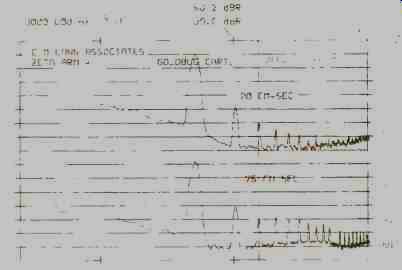
Fig. 9--Spectral analysis of the cartridge output when reproducing the test
signal of Fig. 8. The third harmonic (at the cursor position) is 0.35% in the
left channel and 1.05% in the right.
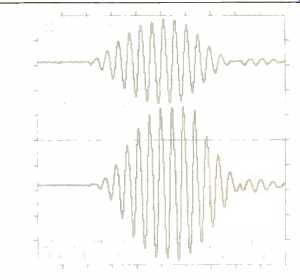
Fig. 10--Output from 15- and 30-cm/S, 10.8-kHz pulse test, Shure TTR-103 test
record. Note the Small amount of asymmetry and compression.
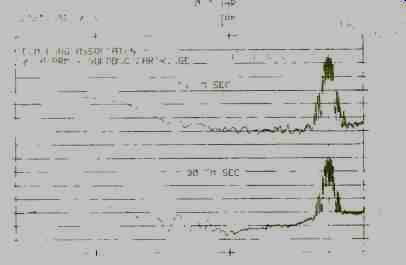
Fig. 11--Spectral analysis of distortion products from signals shown in Fig.
10. Distortion is very low.
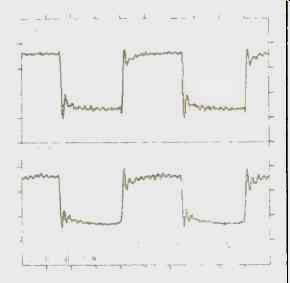
Fig. 12--Output from 1-kHz square wave, CBS STR-112 test record. Ringing is
at 27.8 kHz.
Figure 3 is a graph of the output for a slow sweep made to reveal any tonearm resonance effects. Small discontinuities can be seen at 28, 42, and 320 Hz. These effects are very small, and the only correlation to actual sound that I could even suggest is based upon comments that voices seemed to be a "a little bit more colored" when reproduced by the Zeta/Clement combination. I really feel that these comments by the listening panel are more closely related to the effects seen in Figs. 4 and 5, which show the output versus time and the amplitude versus frequency, respectively, when the Zeta tonearm is excited by a mechanical shock applied to the armtube. This test is designed to reveal any standing-wave energy in the tonearm. As shown in Fig. 5, there are numerous resonances between 1 and 10 kHz. The decay rate, as shown in Fig. 4, is a little slower than desirable. This could add a bit of coloration, and the human voice is a very sensitive test for this.
One of the most outstanding attributes of the Zeta/Clement combination is its ability to present a stable and wide stereo image. Comments made by the listening panel with respect to the stereo image were very favorable as compared to the reference system. The excellent interchannel amplitude separation, shown earlier, when combined with the data of Fig. 6, confirms the panel members' observations. Figure 6 shows the output of the left channel versus the right. A perfect 45° line would indicate no deviation between channels; the deviation here is very slight. Also, the interchannel phase difference versus frequency, shown in Fig. 7, is as good as I have ever measured.
The clarity of the sound of single instruments and small ensembles, especially at high levels, was commented upon by some panel members. This correlates well with the low amount of distortion and the excellent tracking of the Zeta/ Clement combination, shown in Figs. 8 and 9. Both figures show that, even for the highest level band of the B & K 2010 test record, the tracking is very good. Many tonearm/cartridge combinations are not capable of tracking this band. The spectrum of the distortion products is shown in Fig. 9.
The very low distortion, especially for the odd harmonics, correlates well with the panel's comments about the Zeta/ Clement combination having good clarity and a "sonorous" quality. High amounts of odd-order distortion: are usually heard as a "harsh" or "bright" quality.
Some comments made by listening-panel members seem to correlate well with the data shown in Figs. 10 and 11. For example, one comment was made that the piano in the RCA recording of the Saint-Satins Symphony No. 3 (with Charles Munch conducting the Boston Symphony Orchestra) was "clearer" and "more sharply defined" when reproduced by the Zeta/Clement combination, while sounding more "sonorous" with the reference system. The ability of this panel member to hear the sharply defined piano was most likely possible because of the high degree of separation and lack of the fuzziness usually caused by poor interchannel phase relationships; the "sonorous" quality produced by the reference system was probably due to its slightly better performance when reproducing complex waveforms. The sound of full orchestra at high levels, especially the sound of cymbals, was "slightly clearer" when reproduced by the reference system, but the comments made by panel members for the Zeta/Clement combination with this kind of music were very complimentary. Even at the highest level of the Shure TTR-103 test record, which is 30 cm/S, Fig. 10 shows only a small amount of asymmetry and compression.
Figure 11 shows that the low-frequency modulation components due to nonlinearity are very low, even at the 30 cm/S level.
Figure 12 shows the output of the Zeta/Clement combination for the 1-kHz square wave of the CBS STR-112 test record. This is a very good waveform and is typical for a cartridge which has a roll-off of high frequencies such as that indicated in Fig. 1. The ringing, at 27.8 kHz, is the high-frequency resonance due to the interaction of the stylus effective tip mass with the compliance of the vinyl of the test record. This resonance, obviously, is well above the audio band, which shows that the Clement II cartridge has a very low effective tip mass, and that it can therefore handle high level high frequencies very well.
Conclusions
The fact that the Sumiko MDC-800 tonearm is no longer available makes it very easy for me to recommend the Zeta, which I consider to be its closest rival. The Goldbug Clement II cartridge is also an excellent performer, especially with regard to tracking high levels, particularly in the mid range of frequencies. The stereo image which this combination can produce is its strong point. In my opinion, the Zeta Standard tonearm and the Goldbug Clement II cartridge offer good value.
-Edward M. Long
(Source: Audio magazine, Dec. 1986)
Also see: Michell Gyrodec Turntable (Dec. 1986)
Linn Axis Turntable (May 1987)
= = = =